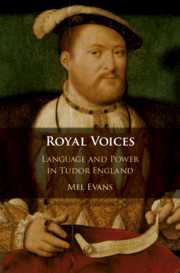Book contents
- Royal Voices
- Royal Voices
- Copyright page
- Dedication
- Contents
- Figures
- Tables
- Acknowledgements
- Introduction
- Part I Authentic Royal Voices
- Part II Appropriated Royal Voices
- 5 Non-Royal Views of Royal Voices
- 6 Impostor, Protector and Queen
- 7 Writing Royal Voices
- 8 Royal Voices, Narrative and Ideology in Sixteenth-Century Chronicles
- Conclusion
- Works Cited
- Index
7 - Writing Royal Voices
Royal Discourse Reports in Sixteenth-Century Correspondence
from Part II - Appropriated Royal Voices
Published online by Cambridge University Press: 28 February 2020
- Royal Voices
- Royal Voices
- Copyright page
- Dedication
- Contents
- Figures
- Tables
- Acknowledgements
- Introduction
- Part I Authentic Royal Voices
- Part II Appropriated Royal Voices
- 5 Non-Royal Views of Royal Voices
- 6 Impostor, Protector and Queen
- 7 Writing Royal Voices
- 8 Royal Voices, Narrative and Ideology in Sixteenth-Century Chronicles
- Conclusion
- Works Cited
- Index
Summary
Chapter 7 looks at how non-royal subjects quoted and reported the texts of their monarch, focussing on evidence from epistolary materials. Letter-writers show a preference for indirect reports, with direct quotation the preserve of those with first-hand access to the monarch. The findings suggest that royal speech was reported primarily for its propositional meaning, rather than its lexico-grammatical form. Royal writing, on the other hand, appears more likely to have been copied out in full, providing a more faithful reproduction of the original text. These practices are considered in relation to the evolving reporting system in early modern English, and their implications for our understanding of how language was conceptualised in the period.
- Type
- Chapter
- Information
- Royal VoicesLanguage and Power in Tudor England, pp. 194 - 214Publisher: Cambridge University PressPrint publication year: 2020

